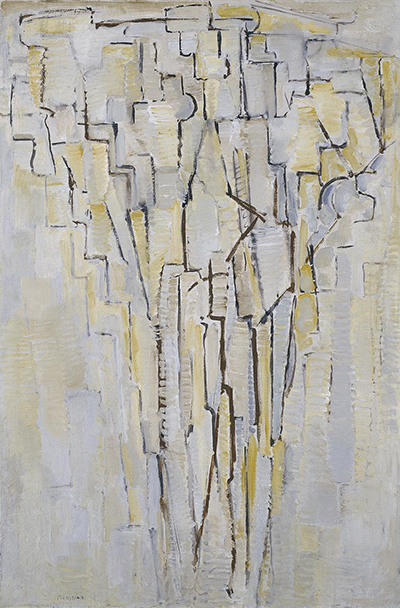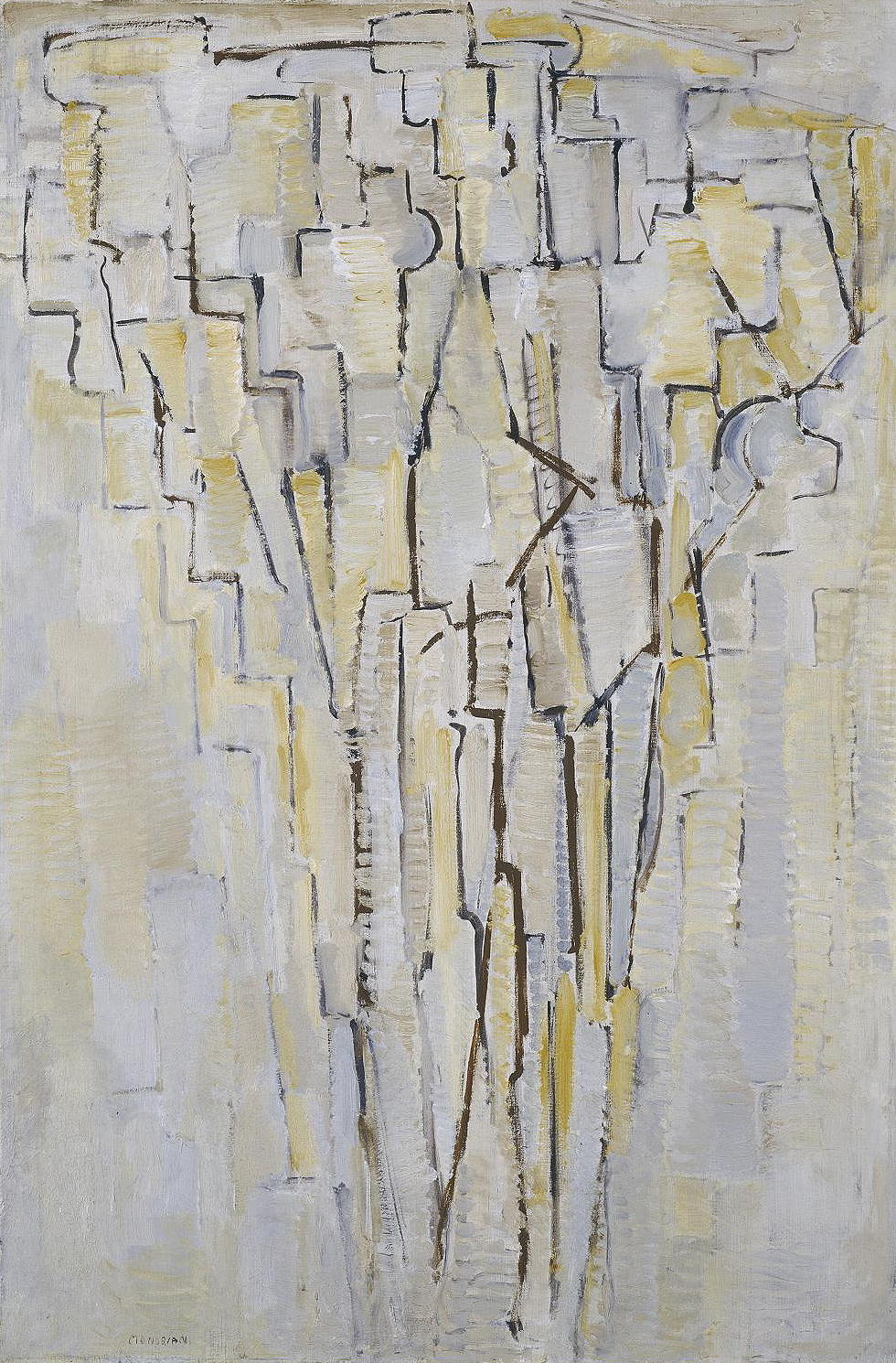Here we find tones of chrome and grey which are placed around a myriad of dark lines that form a triangle shape which is based on the image of a tree.
This differs from some of the artist's other abstract tree paintings in that the lines do not cross particularly often, meaning the shapes formed within them are not as clear here. It is almost more like a brick patchwork, rather than the more random approach used in the other scenes. This makes it even harder to recognise this as an abstract form of a tree and we only really can tell all of this because of the artist's focus on this theme at around this period of his career. There are more right angles with the lines, with it almost being a snapshot of the roofs of houses in a cityscape. Where detail is kept to a minimum, one's imagination can run wild and provide suggestions for the artist's thinking which may not actually be entirely accurate.
We can also point to the influence of Cubism here, and we can compare the fractured look to some famous paintings from that movement including Les Demoiselles d'Avignon and Mediterranean Landscape by Pablo Picasso, who was the spearhead of the group. Mondrian himself made use of different styles during his career, always looking to experiment with different ways of caputuring the same items. His tree paintings are great examples of this and over a period of around a decade he would go from fairly standard depictions to the entirely abstract approach that we find here. There are paintings to suit all tastes, therefore, with some prefering the older methods of painting, whilst younger art fans often preferring the more modern look. Today we are allowed within society to appreciate both approaches, without criticism, where as across the history of art, opinions have often been particularly polarised and fashionable, where new ideas were either the only way or rejected completely out of hand.
The Tree A was completed in 1913 and is over a metre long, marking how the artist was now working with larger canvas than a decade earlier. This piece is owned by the Tate Gallery in London and would most likely be displayed within their modern art museums, such is its style. In terms of related artists, you can also find Cubist paintings from Georges Braque, Albert Gleizes, Robert Delaunay and Juan Gris. There are also expressionist artworks from Kirchner and Klee. This remains one of the most impressive art displays in the world, with the Tate Modern being London's best known venue for modern art.





